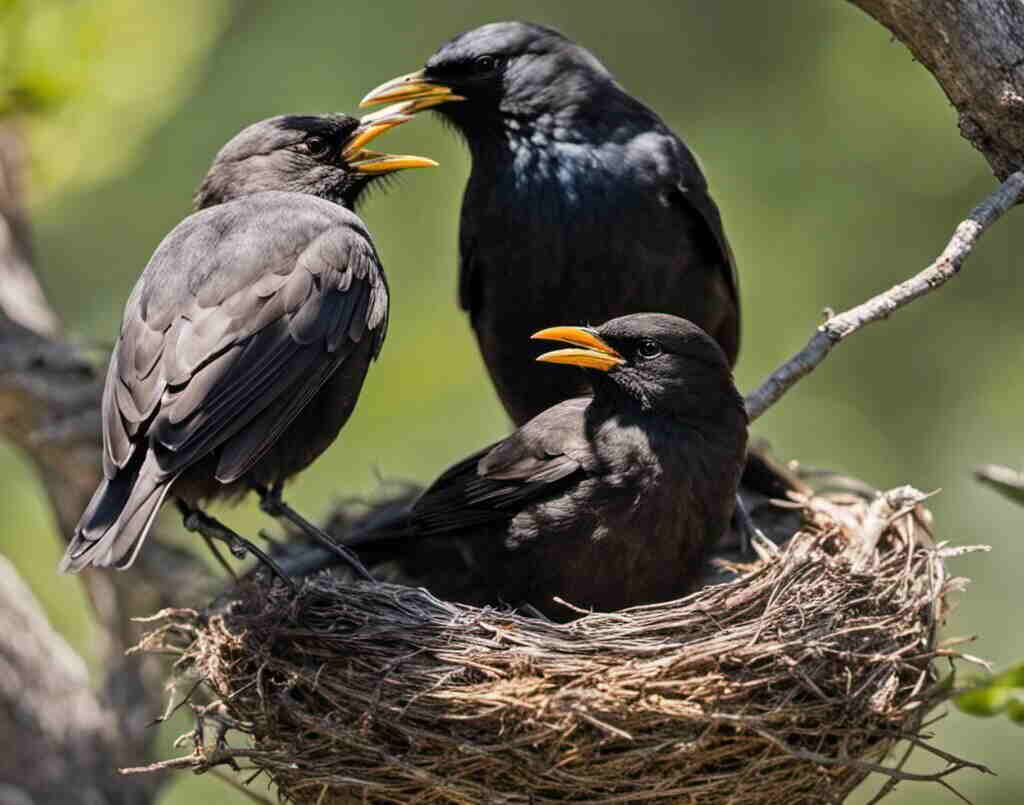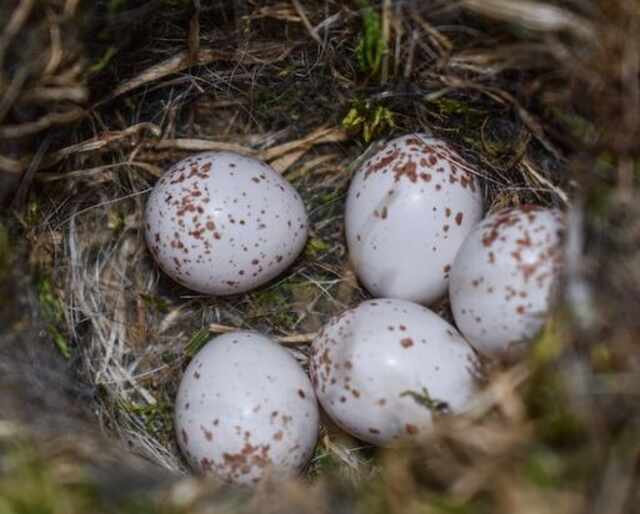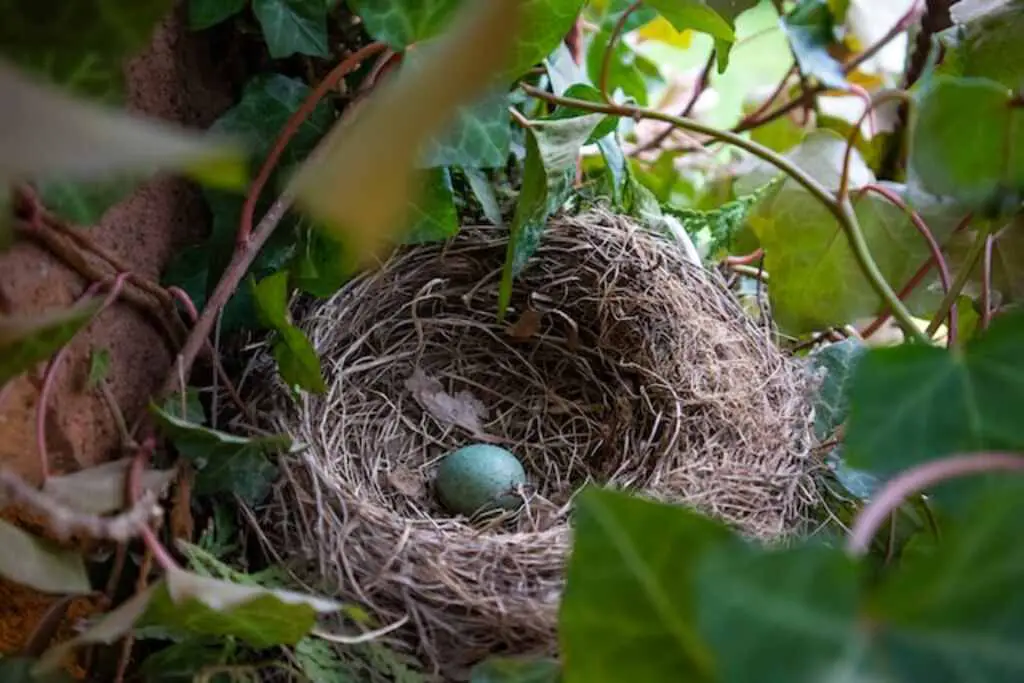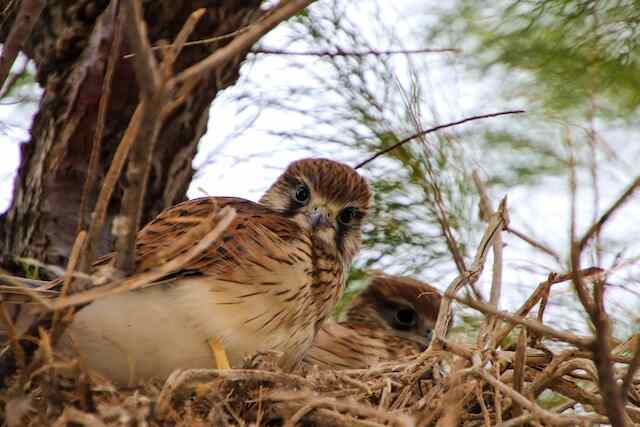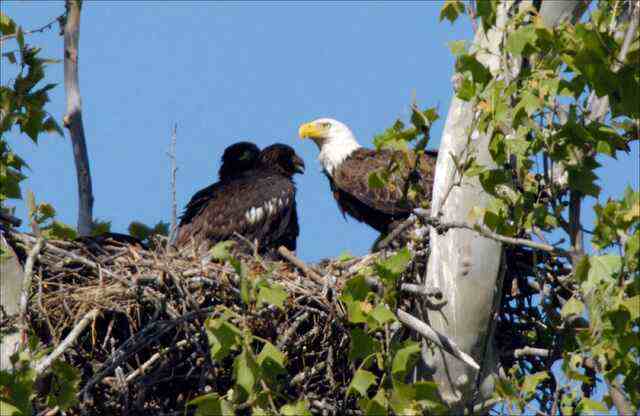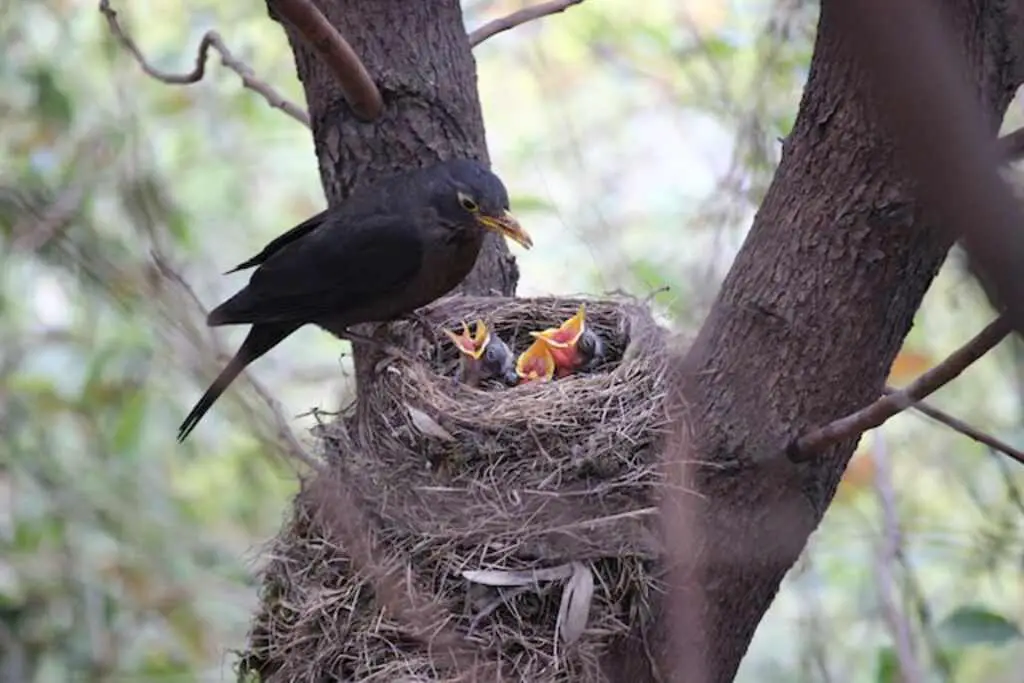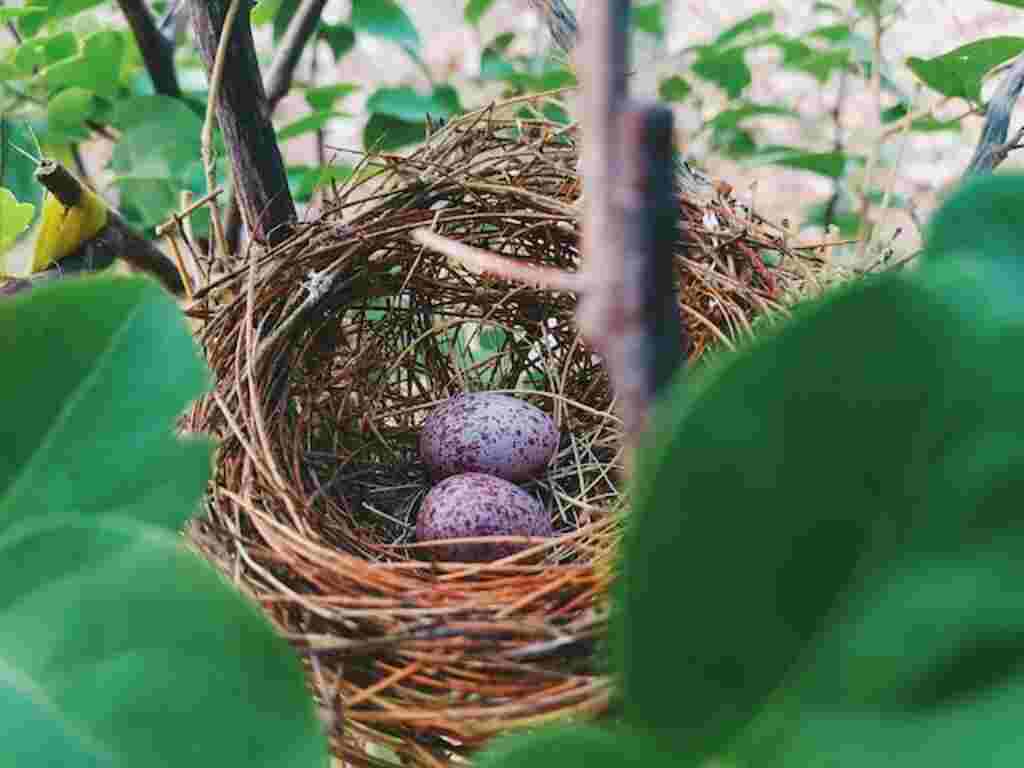Birds are fascinating creatures that exhibit a range of mating behaviors and strategies. As such, understanding their mating habits is crucial in preserving the diversity of bird species and their habitats.
In this article, we’ll provide insights into the reproductive behavior of birds, including their breeding patterns, mating seasons, and the frequency of their mating. We’ll also delve into the different mating systems observed in birds and their courtship rituals.
Table of Contents
- 1 Key Takeaways
- 2 How Often Do Birds Mate?
- 3 Understanding Bird Reproductive Behavior
- 4 Frequency of Bird Mating
- 5 Different Mating Systems in Birds
- 6 Courtship Rituals and Displays
- 7 Nesting and Egg-laying
- 8 Incubation and Parental Care
- 9 Seasonal Mating and Migration
- 10 Conclusion
- 11 FAQs: How Often Do Birds Mate?
- 11.1 How often do birds mate?
- 11.2 What are the different mating systems observed in birds?
- 11.3 What are courtship rituals and displays?
- 11.4 How do birds nest and lay eggs?
- 11.5 What is the role of incubation and parental care in bird reproduction?
- 11.6 How do seasonal changes affect bird mating behavior?
- 12 Author
Key Takeaways
- Birds have diverse mating behaviors and strategies.
- The frequency of bird mating varies among species and is influenced by factors such as availability of mates and the need to ensure successful reproduction.
- The different mating systems in birds include monogamy, polygamy, and promiscuity, each with its advantages and challenges.
- Birds use elaborate courtship rituals and displays to attract mates and establish dominance.
How Often Do Birds Mate?
The frequency of bird mating varies among species. Some birds mate for life, while others mate with multiple partners during breeding season. Some birds mate only once a year, while others mate multiple times throughout the year.
Understanding Bird Reproductive Behavior
Birds have evolved unique reproductive behaviors that allow them to successfully mate and produce offspring in their respective habitats. These behaviors are influenced by a variety of factors, including species-specific characteristics, environmental cues, and hormonal changes.
Factors Affecting Bird Reproduction
Environmental cues such as changes in temperature, rainfall, and daylight hours can trigger hormonal changes in birds and lead to mating behavior. For example, some bird species engage in mating rituals during the spring season when days are longer, and the weather is warmer. Additionally, availability of food resources and suitable nesting sites can also play a role in bird reproductive behavior.
Bird Breeding Patterns
Birds exhibit a wide range of breeding patterns that can differ significantly between species. Monogamy, where a male and female bird mate for life, is observed in some species, while polygamy, where males mate with multiple females, is observed in others. Promiscuity, where there is no long-term commitment between mates, is also a common breeding pattern in some bird species.
In monogamous bird species, both parents are typically involved in incubating the eggs and caring for the young. Polygamous species, on the other hand, may not provide parental care or may have the female as the sole caretaker.
Bird Mating Seasons
Many bird species exhibit seasonal breeding patterns that coincide with changes in temperature and food availability. These seasonal mating behaviors are often timed to ensure that the offspring are born during periods when food is abundant and the weather is favorable for survival.
Other bird species may mate throughout the year, but their behavior may be influenced by factors such as the availability of suitable mates and the need to ensure successful reproduction.
The understanding of bird reproductive behavior is crucial in the conservation of bird habitats. By understanding their behavior, conservationists can ensure that birds have access to the necessary resources for successful reproduction and survival.
Frequency of Bird Mating
Birds mate at different frequencies depending on various factors such as species-specific characteristics, availability of mates, and the need to ensure successful reproduction.
Some bird species mate for life, including the bald eagle and the California condor. These birds typically mate once a year during their breeding season and engage in courtship rituals to strengthen their bond.
On the other hand, birds like the house sparrow engage in frequent mating activities as they breed multiple times throughout the year. Other bird species, such as the Arctic tern, migrate long distances to access suitable breeding grounds and mates.
The frequency of mating also depends on the availability of resources and competition for mates. In bird colonies, males may have to compete for access to females, resulting in frequent mating activities during the breeding season. However, in less crowded environments, mating frequency may be lower.
Overall, the frequency of bird mating varies widely across species and is influenced by a range of factors such as environmental conditions, social interaction, and reproductive needs.
Different Mating Systems in Birds
Birds exhibit a wide range of mating systems, with each species displaying unique behaviors and patterns. The three most common mating systems seen in birds are monogamy, polygamy, and promiscuity.
Monogamy
Monogamy is the most common mating system in birds, where a male and female bird form a pair bond to mate and raise offspring. This behavior is observed in species such as swans, eagles, and most songbirds. Once paired, the birds remain together for at least one breeding season but may stay bonded for multiple seasons or even for life.
In monogamous bird species, both the male and female contribute to nest building, incubation, and parental care. They share the responsibility of rearing their young, and males often provide food for the female during the incubation period and after hatching.
Polygamy
Polygamy is observed in bird species where a male mates with multiple females. It can be further divided into two categories:
- Polygyny: A male mates with multiple females and defends a territory with resources, including nesting sites, to attract females. This behavior is observed in species such as grouse, turkeys, and some songbirds.
- Polyandry: A female mates with multiple males and lays eggs in several nests. This behavior is uncommon but is observed in bird species such as phalaropes and jacanas.
In polygamous bird species, the male or female may be responsible for incubation and parental care, depending on the species.
Promiscuity
Promiscuity is observed in bird species where both males and females mate with multiple partners during the breeding season. This behavior is seen in species such as ducks, geese, and some shorebirds. In promiscuous bird species, males do not provide parental care and often mate with multiple females to increase their chances of passing on their genes.
Females, on the other hand, may mate with multiple males to ensure genetic diversity and to secure access to resources, such as food and nesting sites.
Courtship Rituals and Displays
Birds are known for their elaborate courtship rituals and displays during the mating process. These behaviors involve various methods, such as vocalizations, dances, and unique displays of plumage.
Different bird species have evolved their courtship behaviors to suit their habitats, available resources, and mating systems. Understanding these behaviors provides insights into the evolutionary factors that shape bird reproduction cycles.
Unique Courtship Behaviors in Bird Species
One example of unique courtship behavior can be seen in the Australian Bowerbird species. Male Bowerbirds build intricate sticks structures, decorated with flowers, berries, and other items, to attract female mates. The bower itself is the stage where the male performs various dances and songs while the female watches and judges his performances.
Another exceptional example is observed in the Western Grebe species. These birds perform an elaborate synchronized dance, entwining their necks and paddling their feet across the water’s surface. This display is essential for the bonding process between the male and female and serves as a reassurance to strengthen their commitment.
The Role of Plumage in Bird Courtship
Bird plumage can play a significant role in courtship displays. Male birds often exhibit brilliant, colorful feathers, while females tend to have more subdued colors. The male’s plumage serves as a signal to attract potential mates.
For example, the Peacock species has a beautiful, iridescent tail that it fans out in an open display, while the male Sage Grouse inflates its chest and bounces on its legs, revealing its white chest feathers.
Female birds can also use their plumage to attract males. For instance, in the Phalarope species, where males often take up the bulk of the parental care role, females have brighter plumage to attract potential mates. The females then mate and leave the males to care for the young.
Summary
Birds’ courtship rituals and displays are fascinating and often unique, involving behaviors such as dances, songs, and extravagant displays of plumage. These behaviors play a crucial role in mate selection, bonding, and strengthening reproductive cycles.
Understanding these behaviors provides insights into the evolution of bird mating habits and the ecological factors that shape them.
Nesting and Egg-laying
After successful courtship and mating, birds begin building their nests to house their eggs and offspring. Different bird species use varied nesting materials and locations to construct their homes. Some birds prefer to build their nests on the ground, while others prefer elevated locations, such as trees or cliffs.
The size and shape of the nest also vary depending on the bird species. For example, the Bald Eagle builds massive nests using sticks, while the tiny hummingbird constructs a small cup-like nest from plant fibers and spider silk.
| Notable nest builders | Nest materials |
|---|---|
| Great Grey Owl | Sticks, moss, and bark |
| American Robin | Mud and grass |
| Superb Fairy-wren | Spiderwebs and grass |
Once the nest is complete, the female bird lays her eggs, typically one at a time, at regular intervals. The number of eggs laid by each bird species varies, with some laying up to a dozen eggs while others lay just one or two.
The timing of egg-laying also varies between different bird species. Some birds lay their eggs in the early morning hours, while others do so in the evening. In some cases, birds may even lay their eggs several days apart.
Once the eggs are laid, both male and female birds take turns incubating them to keep them warm and promote healthy growth. Incubation periods can last anywhere from a few weeks to several months, depending on the bird species.
During the incubation period, the parents ensure that the eggs are kept at a consistent temperature and are protected from predators. Once the eggs hatch, the parents continue to provide around-the-clock care for their young, feeding them with regurgitated food until they are able to fend for themselves.
Incubation and Parental Care
Once the eggs are laid, both parents take turns incubating them to ensure that they are kept warm and safe until hatching. The duration of the incubation period varies depending on the species, with some lasting just a few days and others taking several weeks.
During this time, the parents may adjust the temperature and humidity of the nest to optimize conditions for the developing embryos. They may also turn the eggs regularly to prevent the yolks from settling and sticking to the membranes, which can lead to developmental issues.
After hatching, the chicks are entirely dependent on their parents for food, warmth, and protection. Both parents continue to care for the young, with some species dividing tasks between them.
For example, the male may be responsible for bringing food to the nest, while the female keeps the chicks warm and helps them with their grooming.
As the chicks grow and develop, the parents may change their behavior to accommodate their needs. For example, they may gradually spend less time sitting on the chicks as they become better able to regulate their own temperature.
Eventually, the young birds will leave the nest and begin to explore their surroundings, though the parents will continue to provide care and protection until they are independent.
Seasonal Mating and Migration
Birds have evolved to time their mating activities with the changing seasons. Seasonal changes, such as temperature, sunlight, and food availability, play a crucial role in determining when and how often birds mate.
Some bird species mate only during specific times of the year. For instance, the Arctic Terns breed during the spring and summer months in the Arctic regions and migrate to the Antarctic during the winter season.
Similarly, most migratory birds breed during the warmer seasons of the year and fly to their wintering grounds when the weather turns cold.
In addition to seasonal mating, migration patterns in birds are also influenced by mating behavior. Bird species often migrate to find suitable breeding grounds, where the availability of mates and resources are abundant.
For example, the North American Woodcock migrates from southern states to northern regions of the United States during the spring breeding season to find suitable nesting sites and food.
Interestingly, some bird species migrate solely for mating purposes, also known as lekking behavior. During this process, male birds gather in groups known as leks and perform elaborate courtship displays to attract females.
The females mate with the most attractive males and leave, with no further parental care from the males. The Sage Grouse is a classic example of this mating behavior.
Conclusion
Overall, the mating habits of birds are fascinating and complex. From courtship rituals and nesting behaviors to parental care and migratory patterns, there is a lot to learn about these remarkable creatures.
By understanding the reproductive behavior of birds, we can better appreciate their role in the ecosystem and the challenges they face in ensuring successful breeding.
One important takeaway from this article is the diversity of mating systems observed in birds. While some species are monogamous, others are polygamous or promiscuous, highlighting the range of strategies birds use to ensure successful reproduction.
Additionally, the importance of environmental factors, such as seasonal changes and habitat availability, cannot be overstated when it comes to bird breeding patterns.
Preserving Bird Habitats for Successful Mating and Breeding
As human activity continues to impact natural habitats, it is important to recognize the need for conservation efforts to protect bird populations and their breeding grounds. By preserving habitats that provide suitable resources and breeding environments for birds, we can help ensure that they are able to reproduce successfully and maintain healthy populations for future generations.
In conclusion, the world of bird mating habits is diverse and fascinating, and there is always more to learn about these remarkable creatures. Whether you are a bird enthusiast, conservationist, or simply curious about nature, understanding the reproductive behaviors of birds can offer valuable insights into the complexity of the natural world.
FAQs: How Often Do Birds Mate?
How often do birds mate?
The frequency of bird mating can vary depending on several factors, including species-specific characteristics, availability of mates, and the need to ensure successful reproduction.
What are the different mating systems observed in birds?
Birds exhibit various mating systems, including monogamy, polygamy, and promiscuity. Examples of bird species that exhibit each type of mating behavior will be discussed.
What are courtship rituals and displays?
Courtship rituals and displays are behaviors performed by birds during the mating process. Birds use dances, songs, and displays of colorful plumage to attract mates and establish dominance.
How do birds nest and lay eggs?
Birds build nests, choose suitable locations, and lay their eggs to ensure the survival of their offspring. Different strategies employed by bird species to protect their nests will be discussed.
What is the role of incubation and parental care in bird reproduction?
Birds take turns incubating their eggs and both parents play a role in caring for the eggs and chicks. Notable parental care behaviors in different bird species will be highlighted.
How do seasonal changes affect bird mating behavior?
Some bird species time their mating activities in sync with specific seasons. Migration patterns also play a role in finding suitable mates and breeding grounds for birds.

